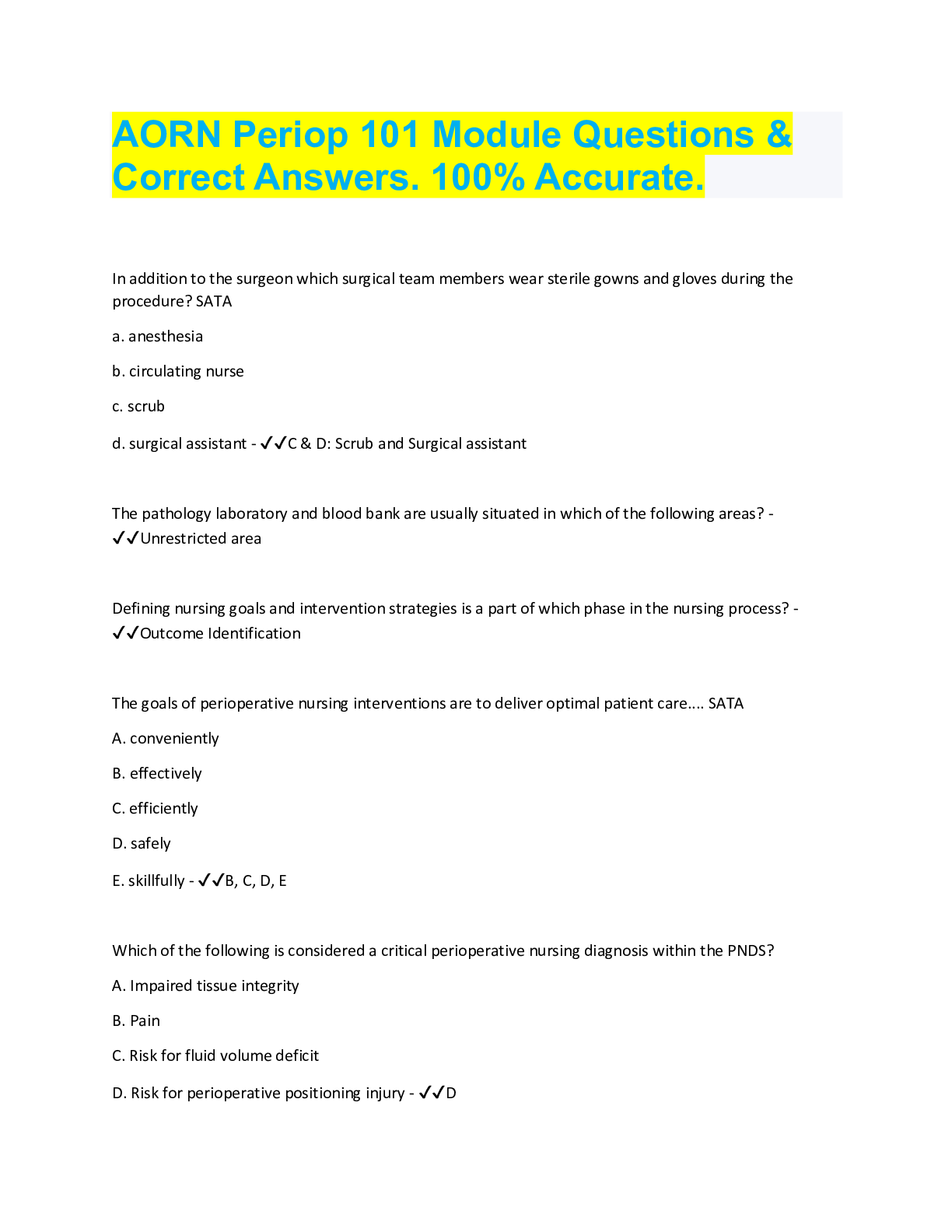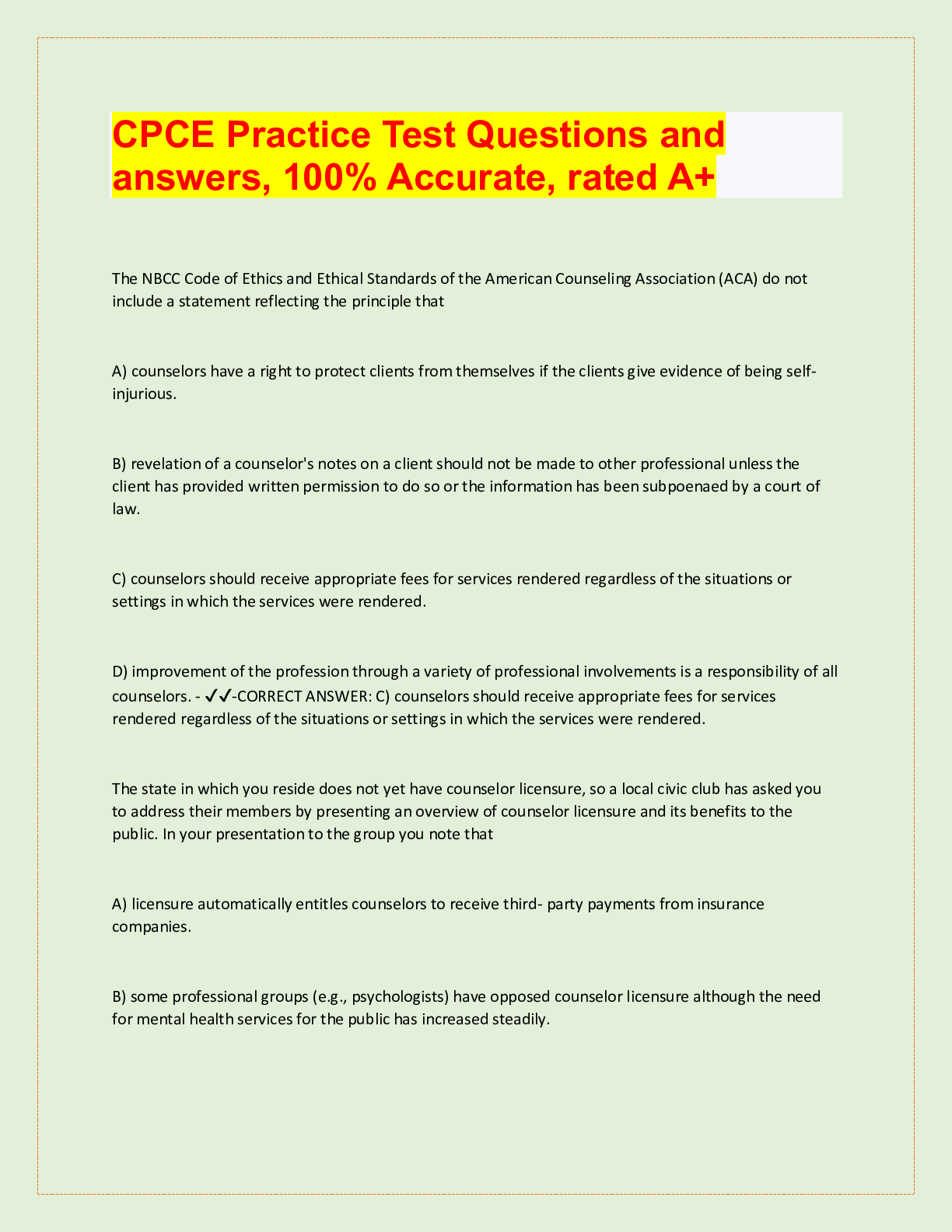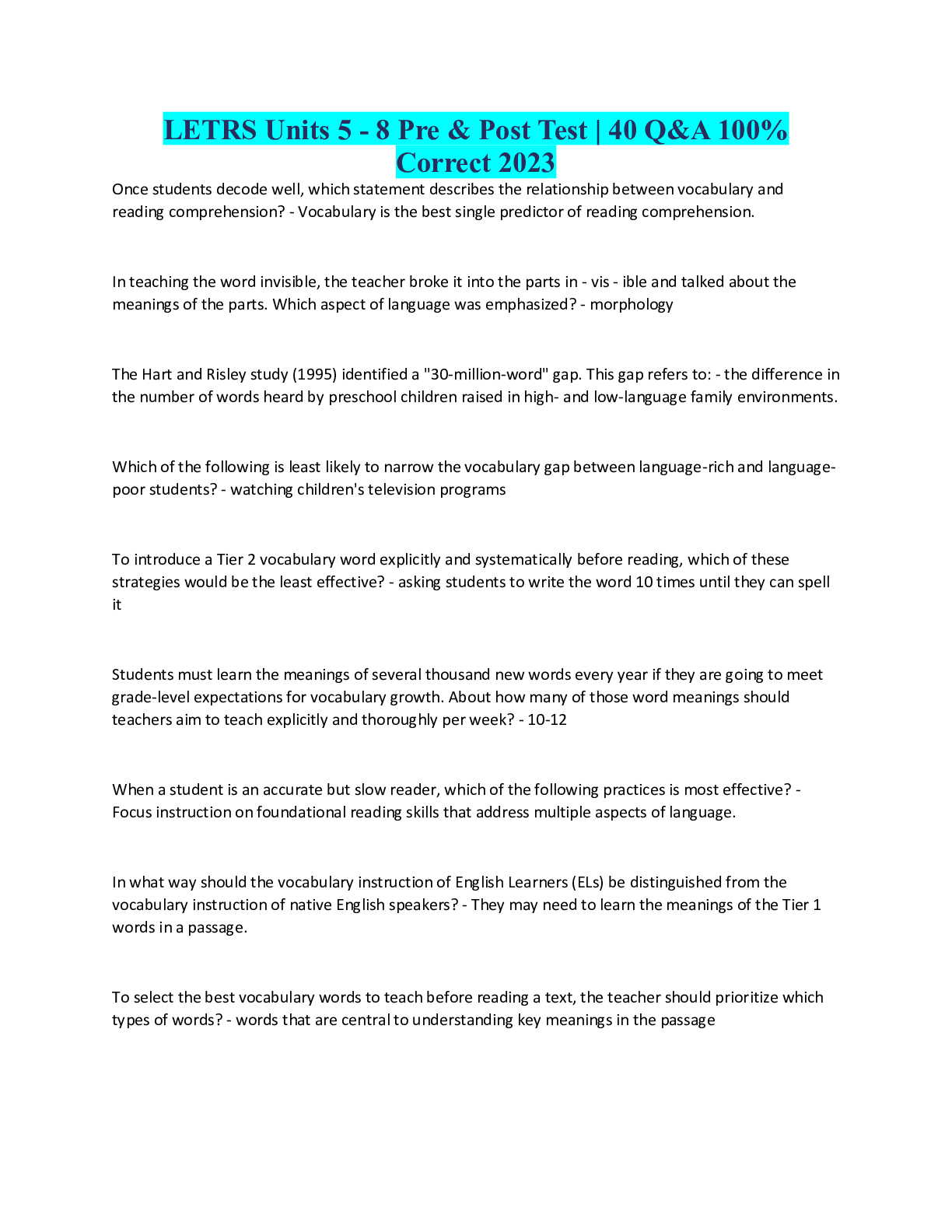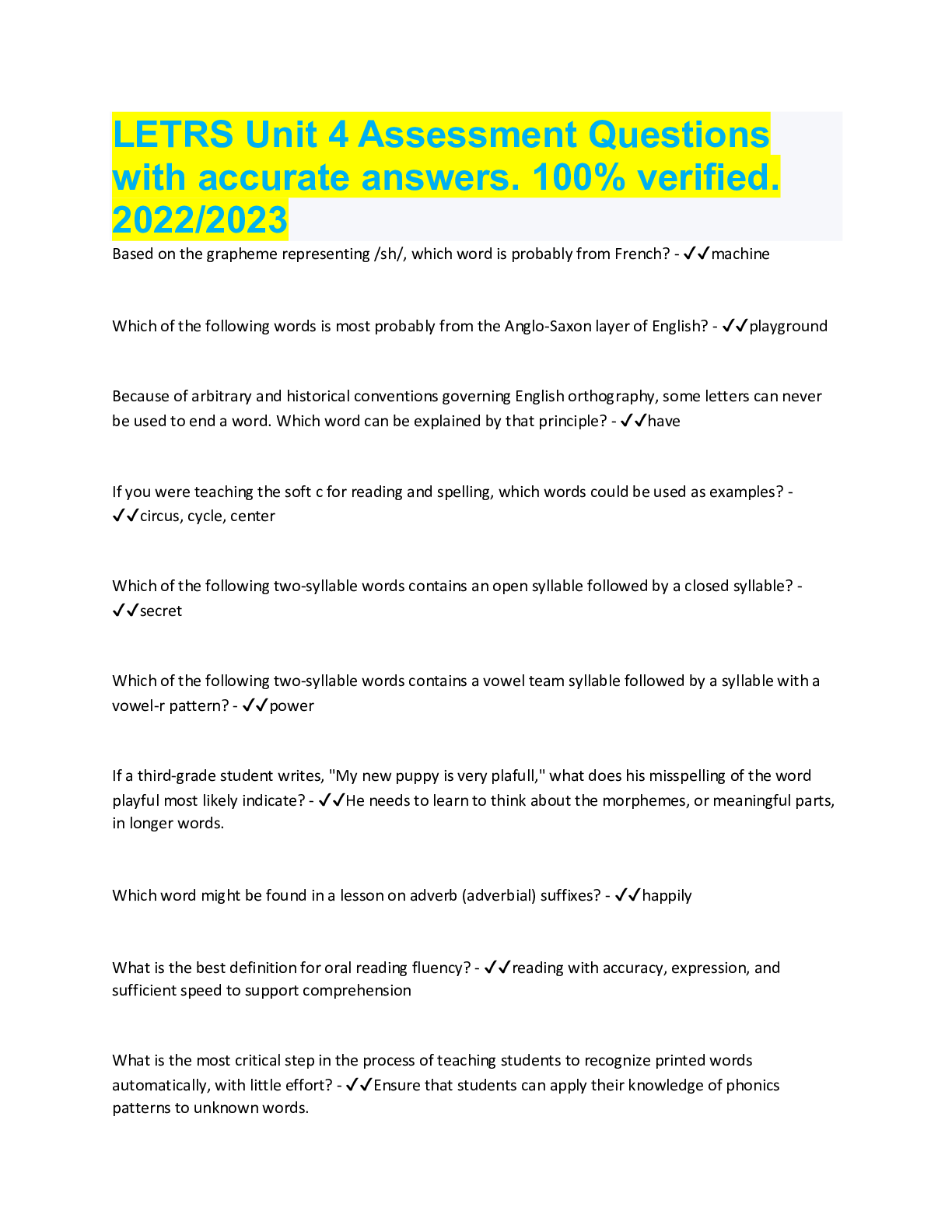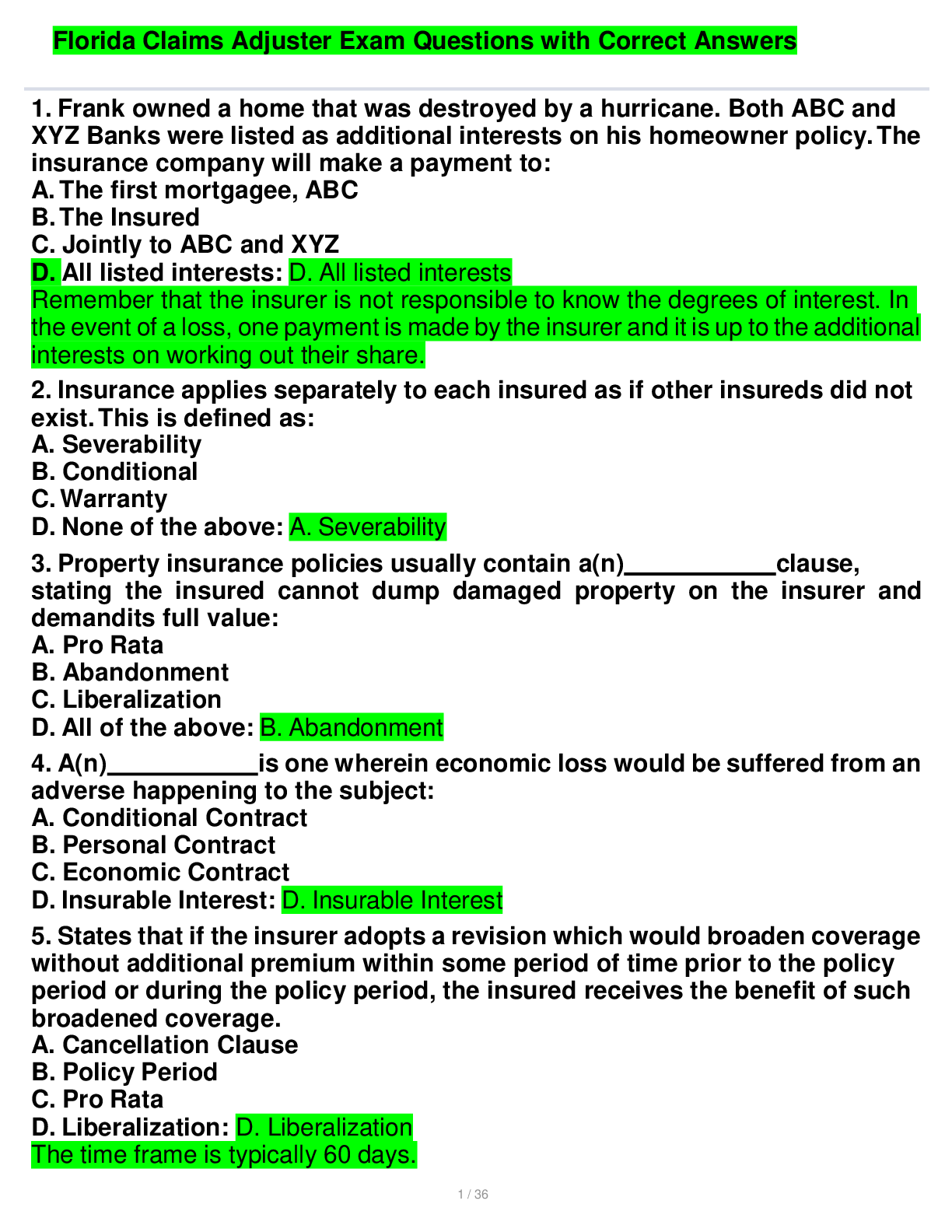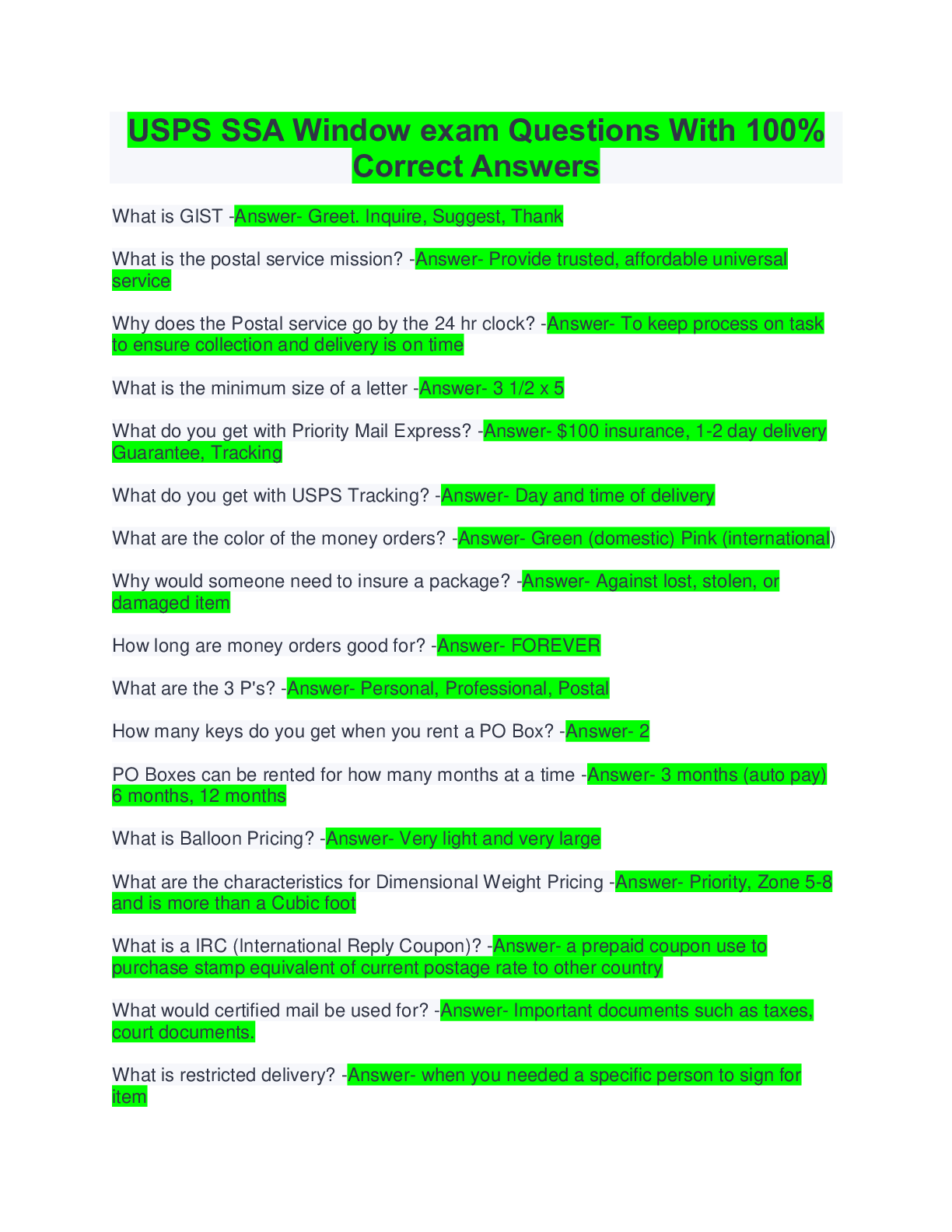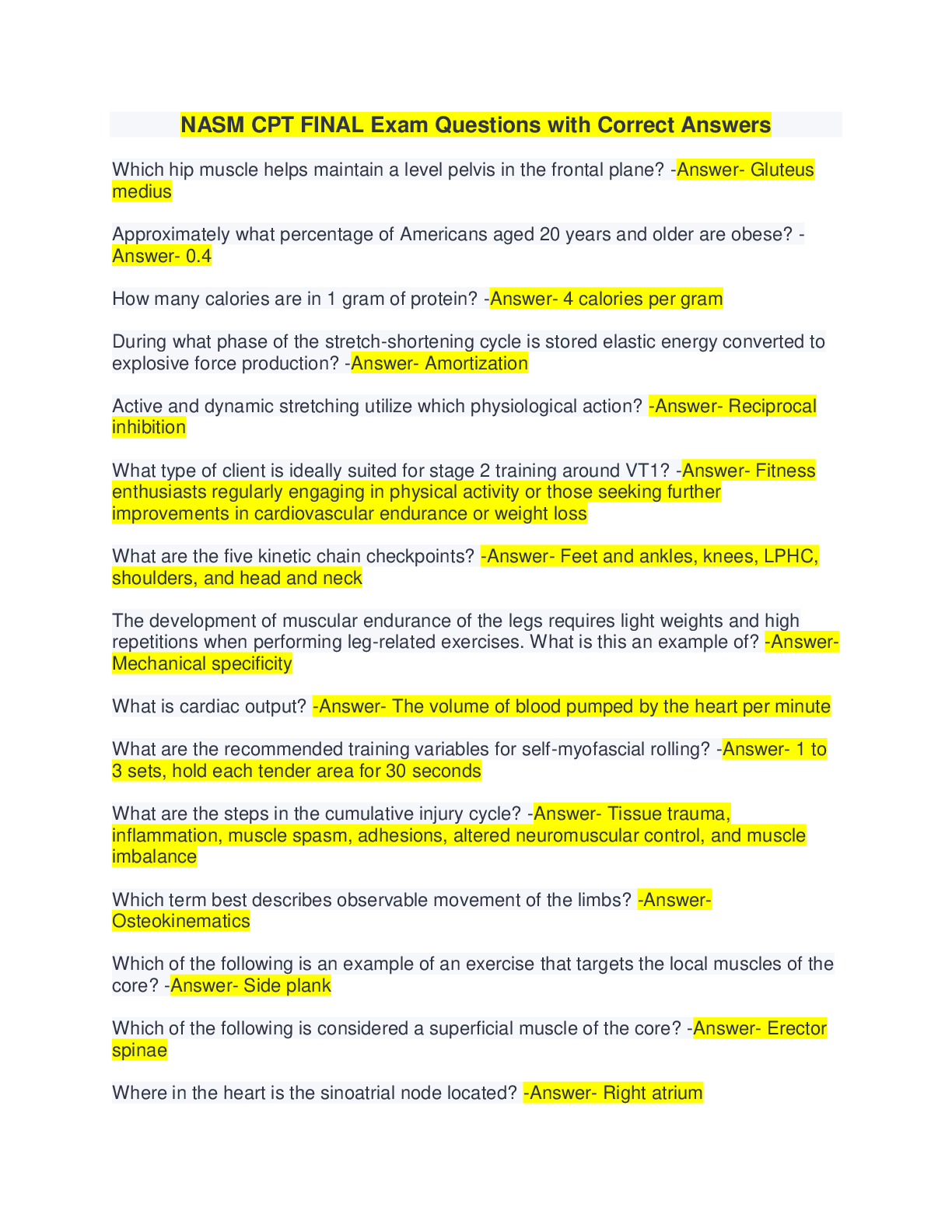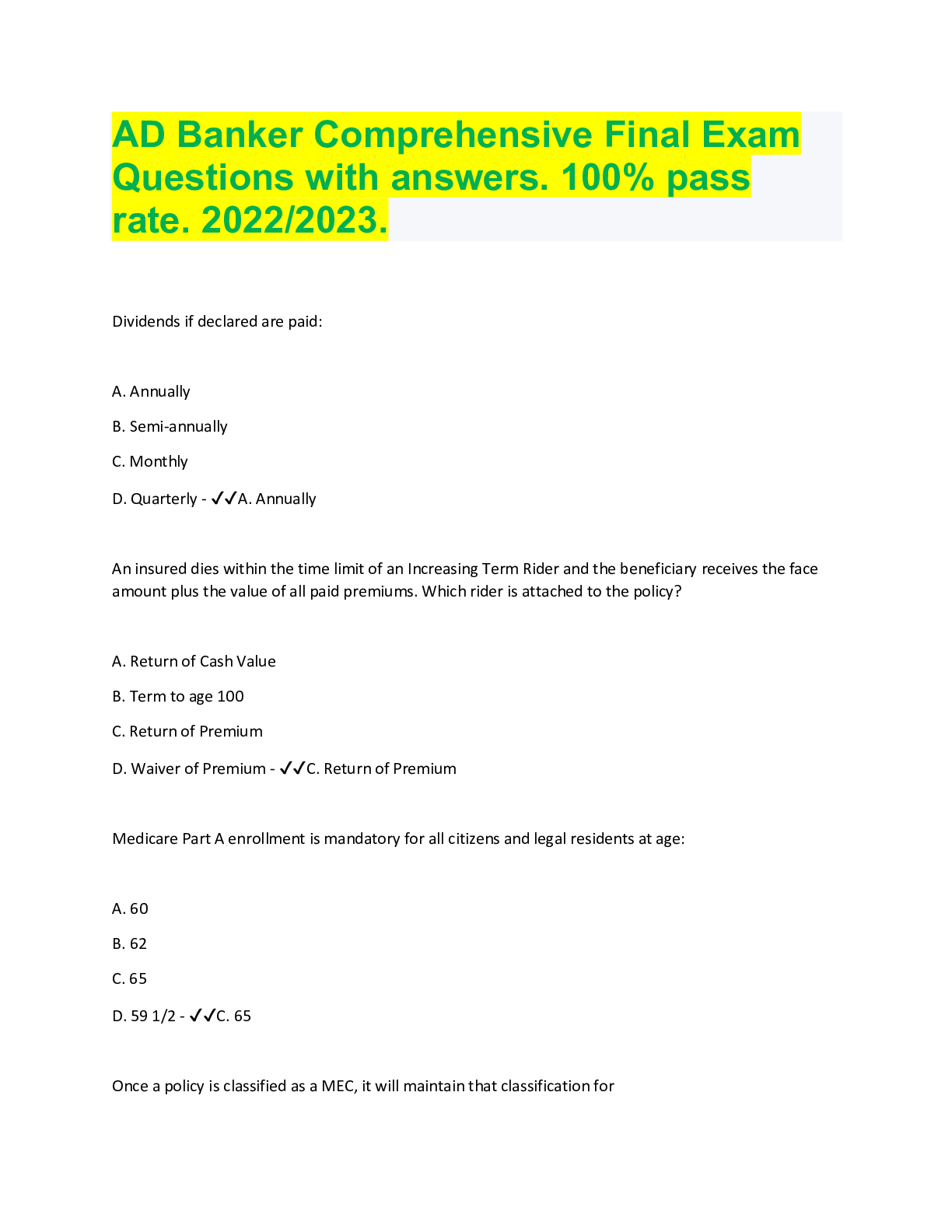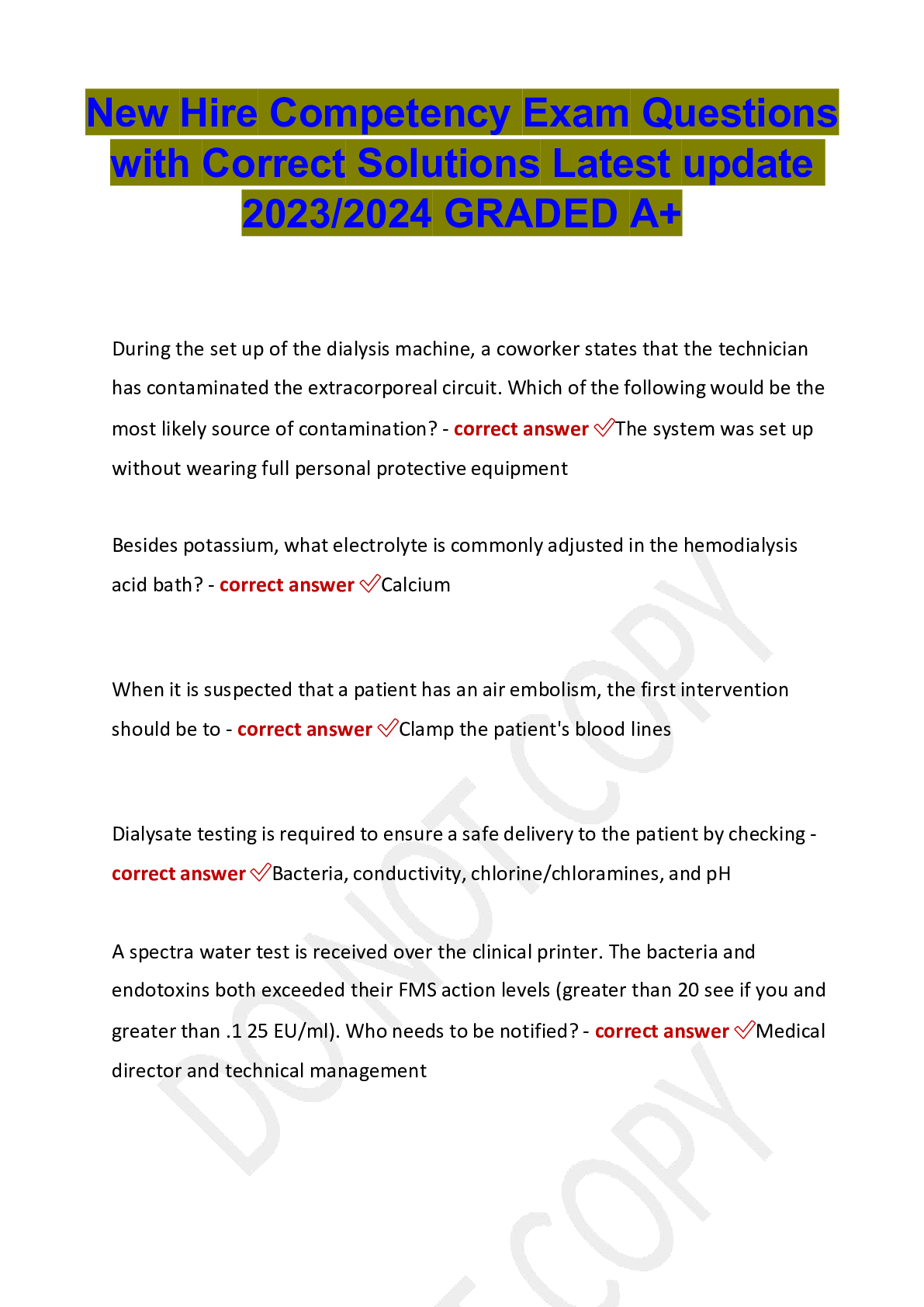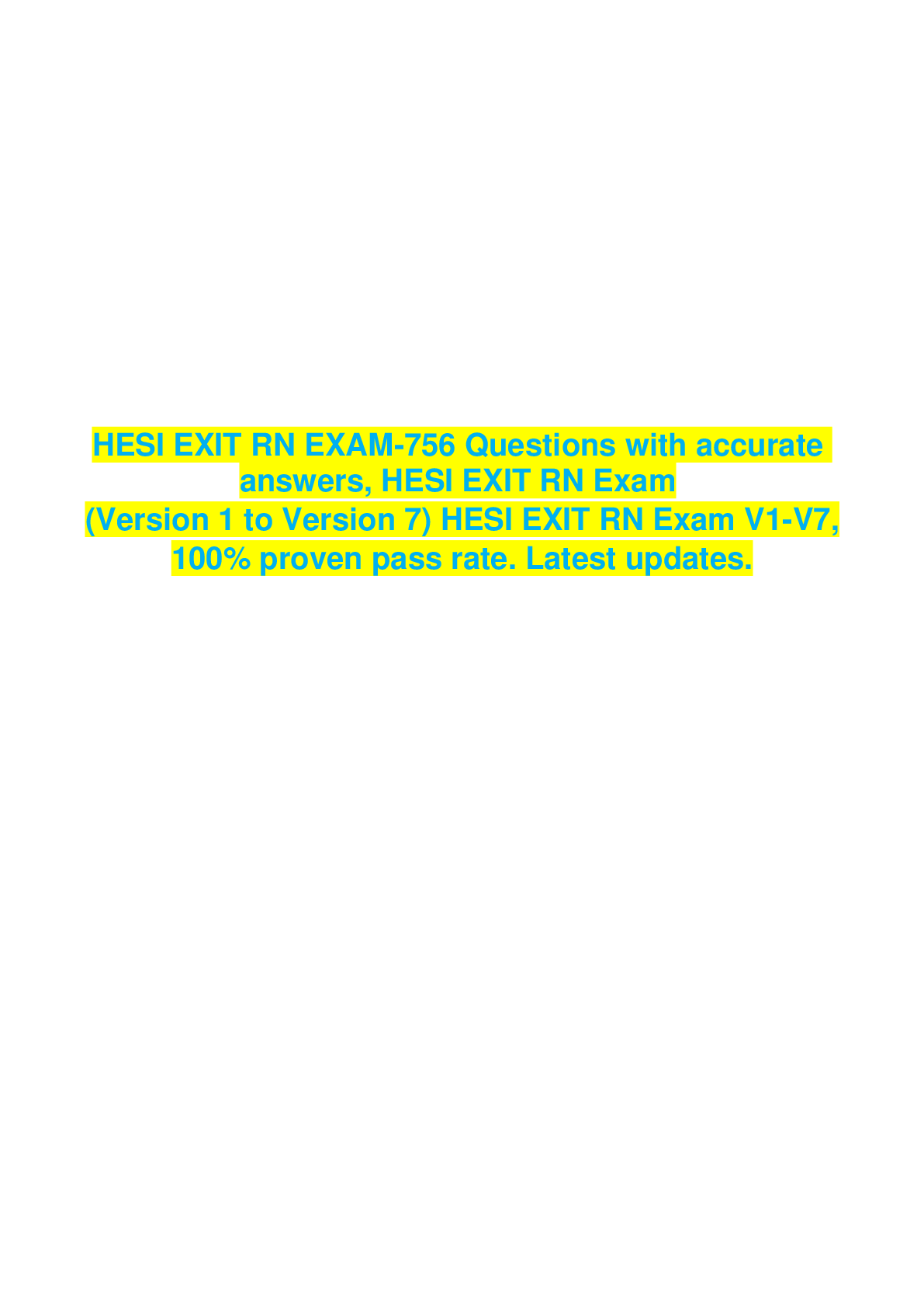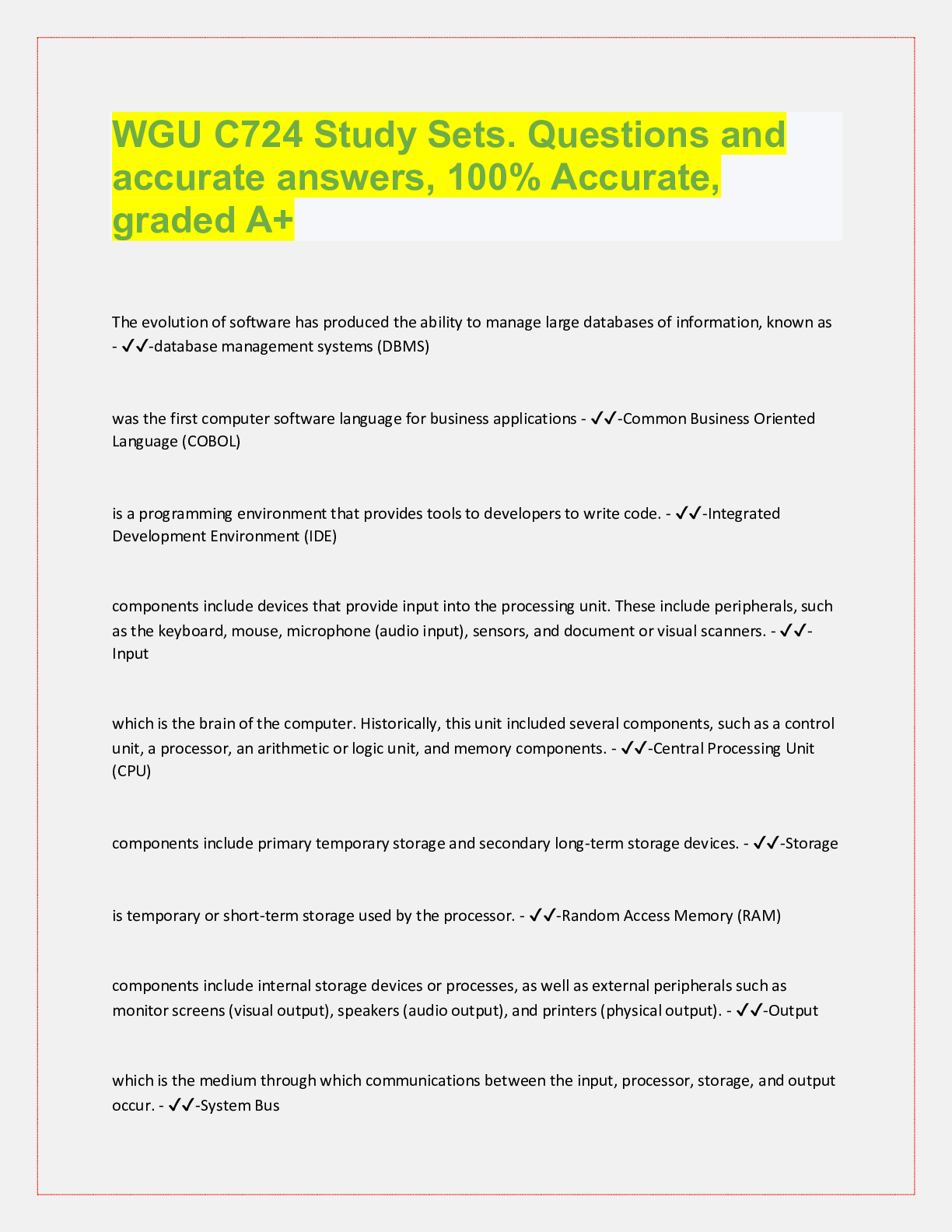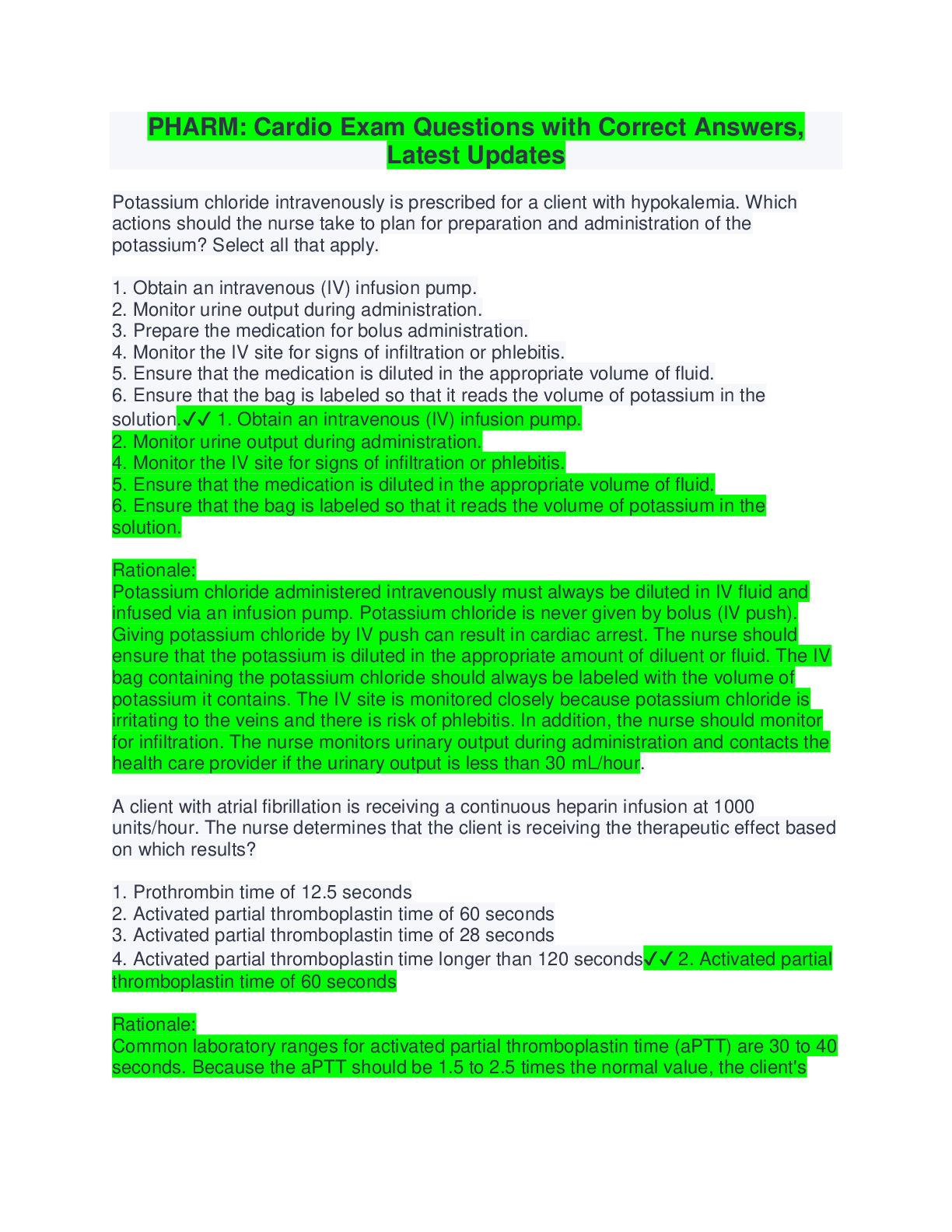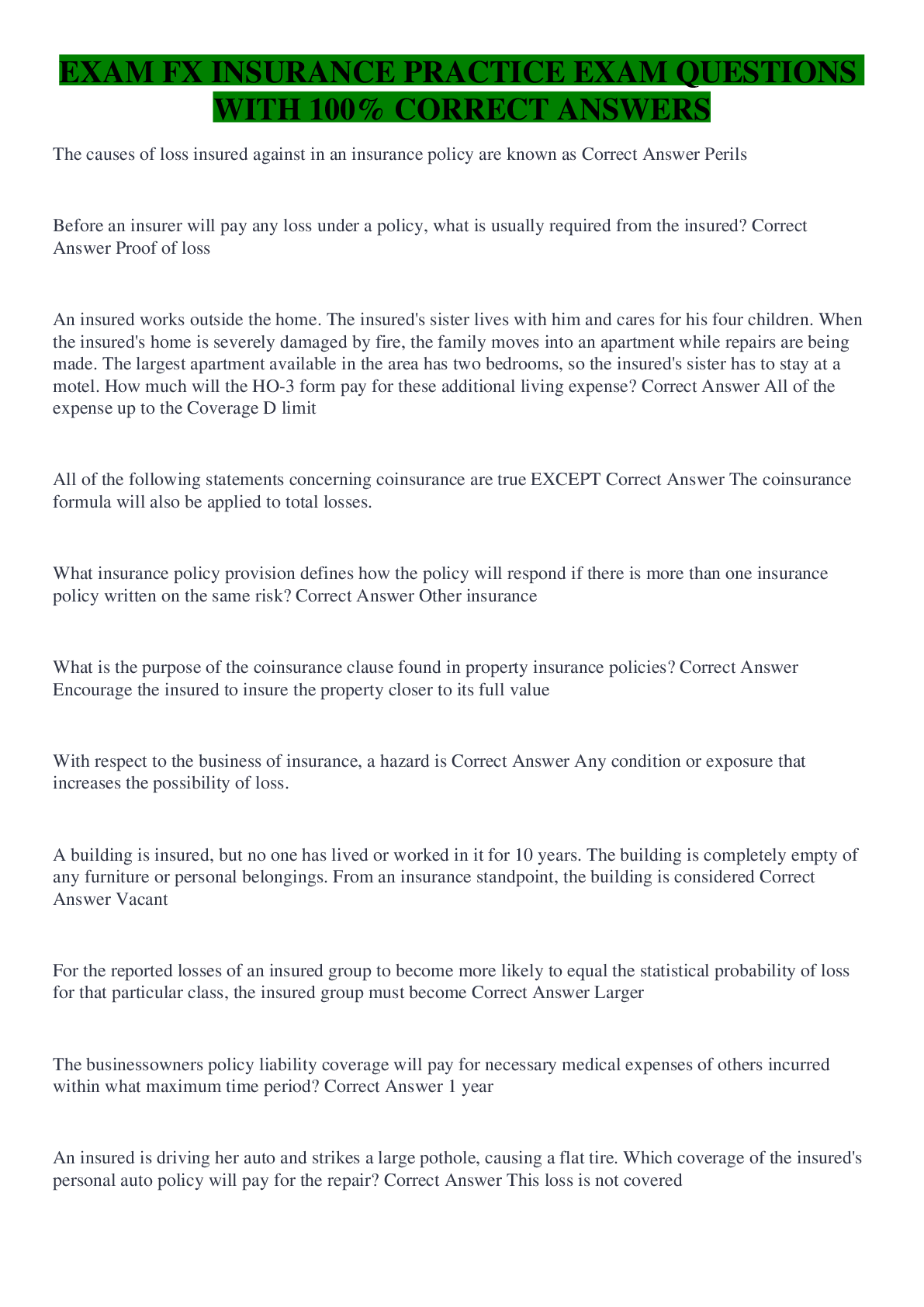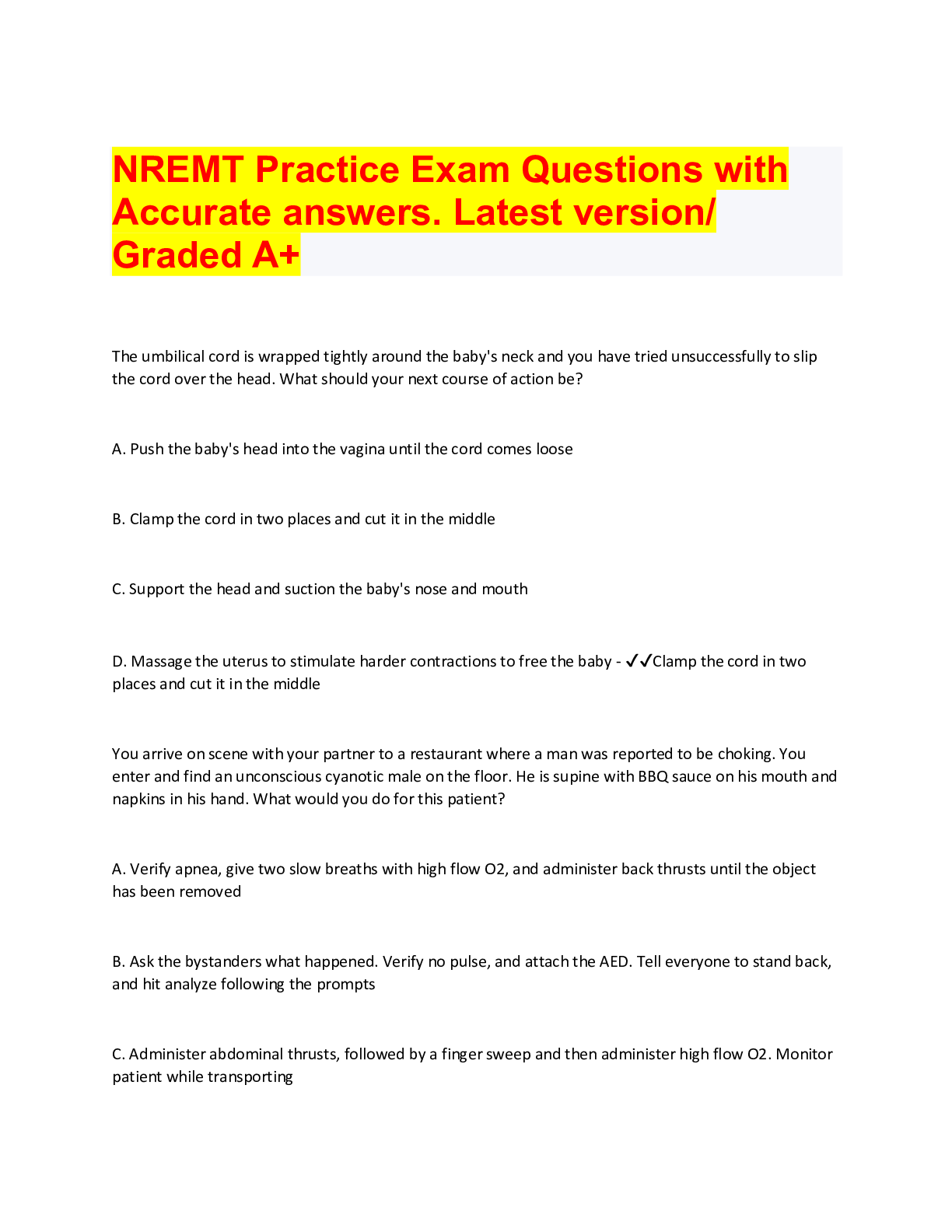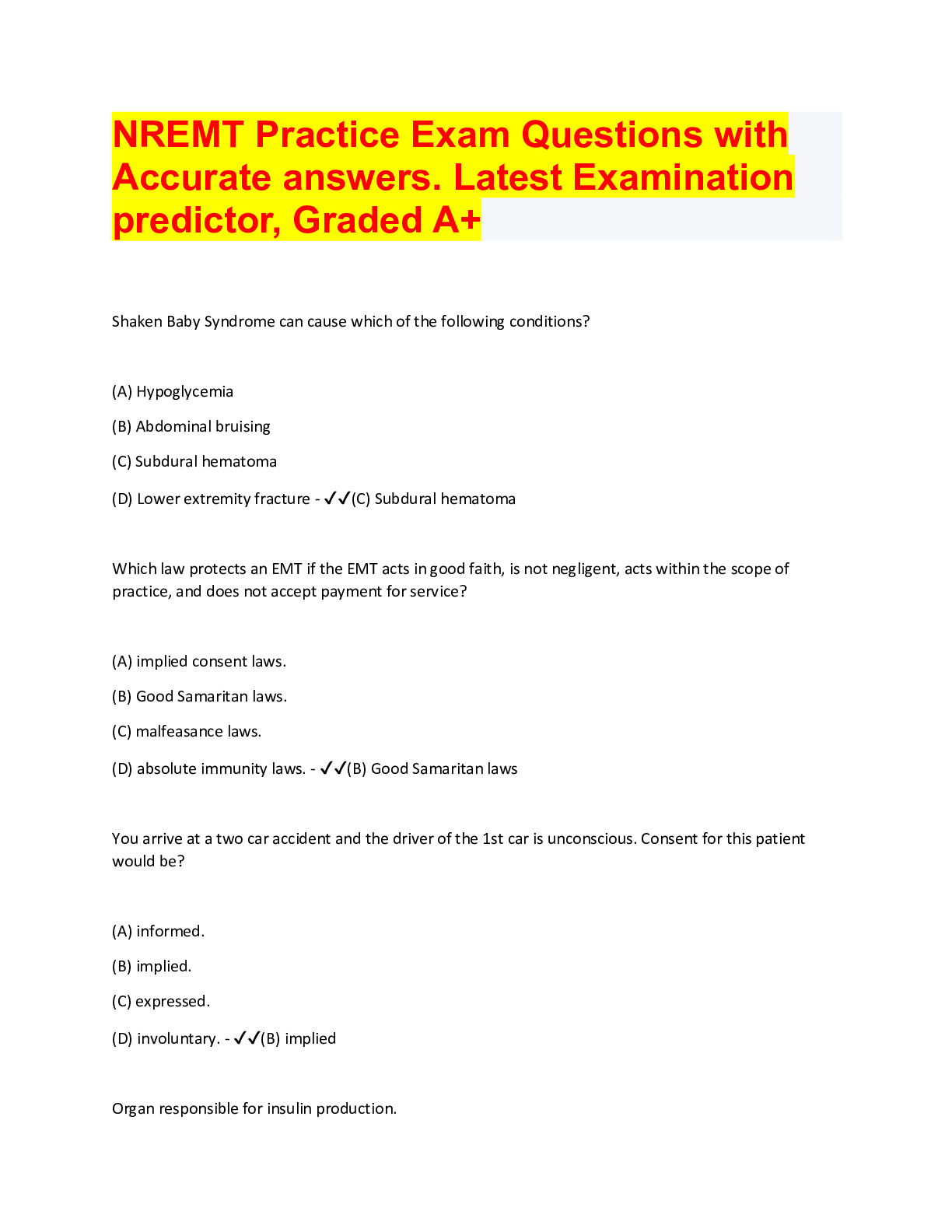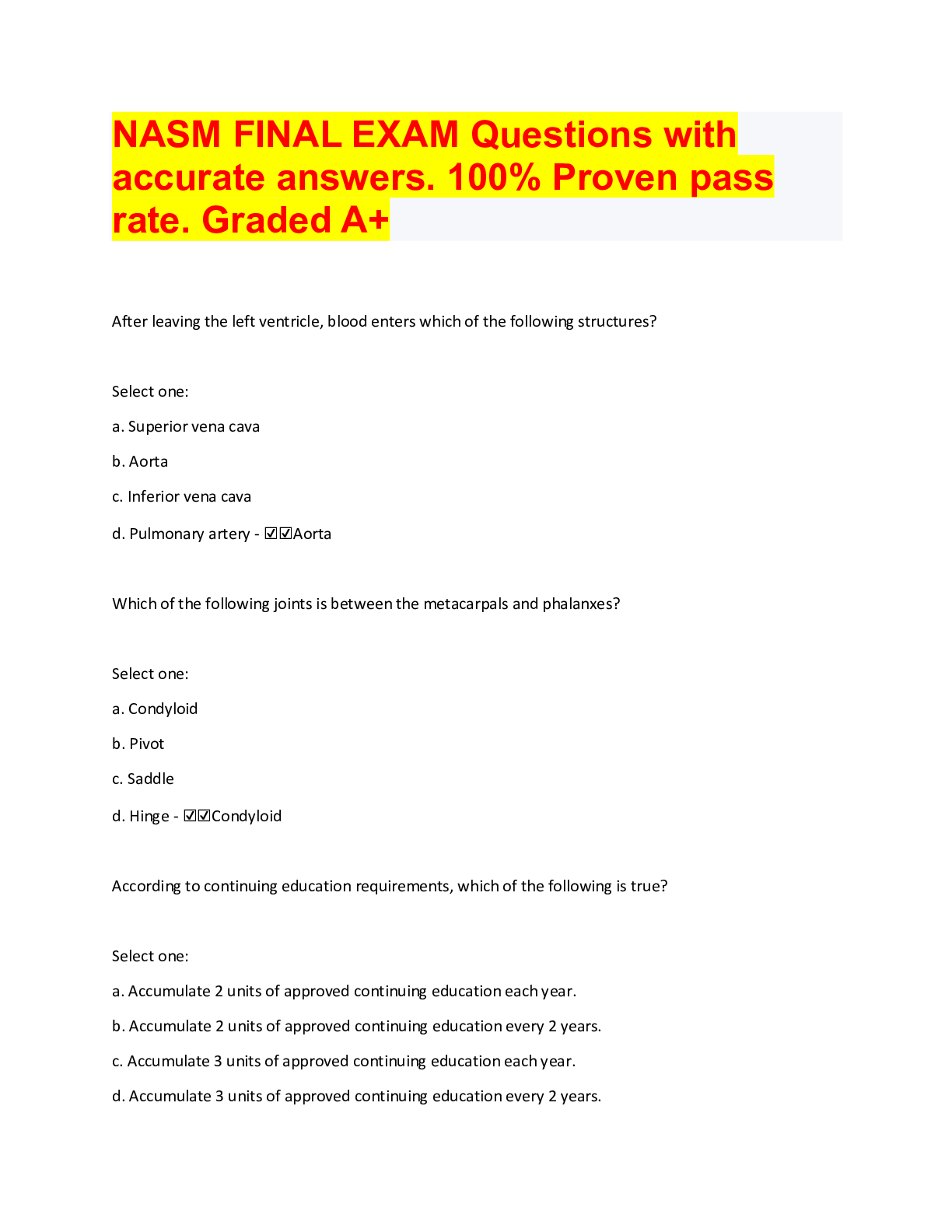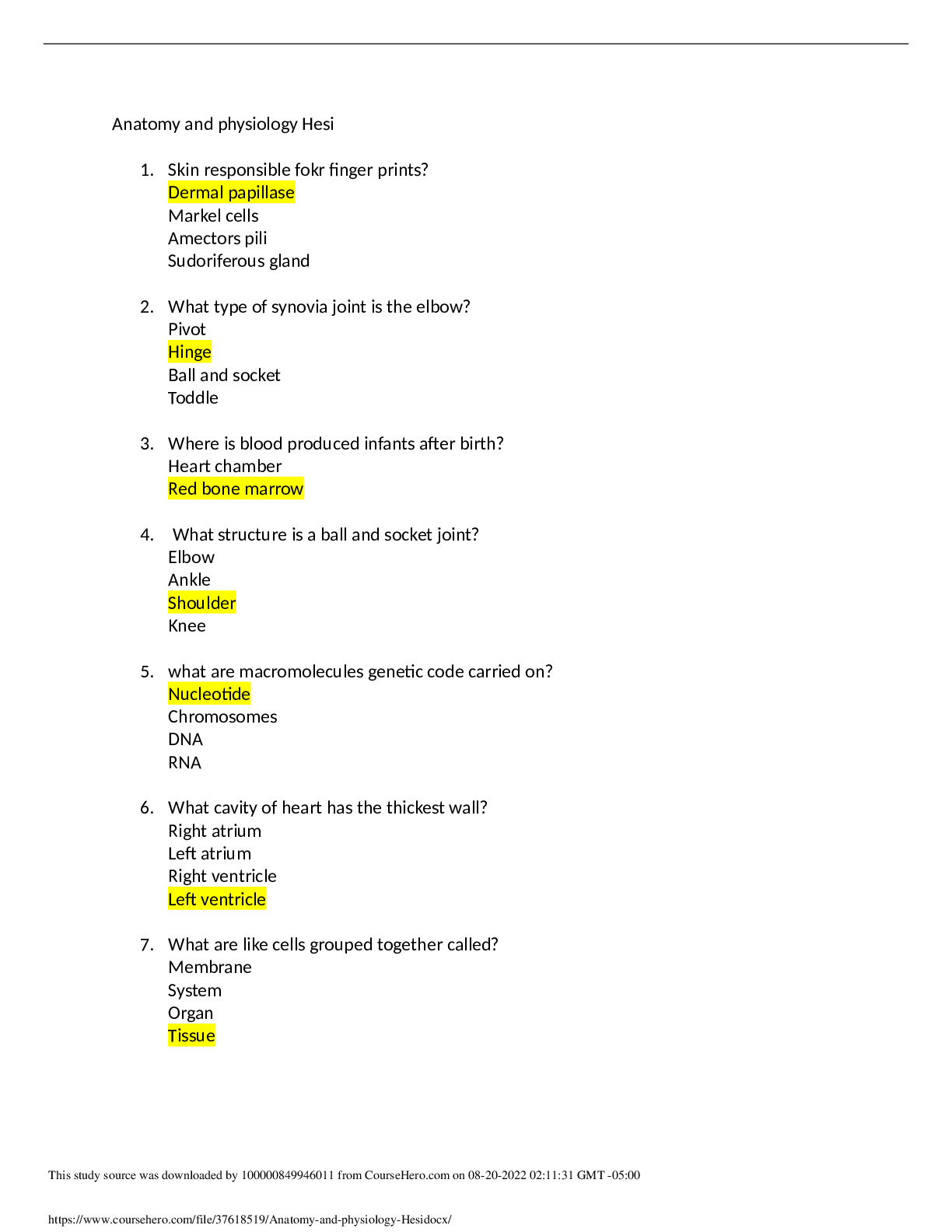Project Management > QUESTIONS & ANSWERS > WGU C215 Study Guide – FINAL. Top Exam Questions with accurate answers, rated A+ (All)
WGU C215 Study Guide – FINAL. Top Exam Questions with accurate answers, rated A+
Document Content and Description Below
WGU C215 Study Guide – FINAL. Top Exam Questions with accurate answers, rated A+ Total Quality Management (TQM) Philosophy - ✔✔-1. customer focus 2. continuous improvement 3. employee emp... owerment 4. use of quality tools 5. product design 6. process management 7. managing supplier quality Process Capability Index (Cpk) - ✔✔-Basic function of Six Sigma. Measures the process potential and performance of processes. The higher the range of Cpk, the improved is the ability of the process to complete its necessities. Six Sigma - ✔✔-A disciplined, data-driven approach and methodology for eliminating defects (driving toward six standard deviations between the mean and the nearest specification limit) in any process - from manufacturing to transactional and from product to service. Design Capacity - ✔✔-The theoretical maximum output of a system in a given period under ideal conditions. Location Analysis - ✔✔-proximity to customers, transportation, source of labor, community attitude, proximity to suppliers, and many other factors. The technique for determining location decisions. Line Processes - ✔✔-A type of process used to produce a large volume of a standardized product. ■ Limited customization and high volume Batch Processes - ✔✔-A type of process used to produce a small number of products in groups or batches based on customer orders or specifications. ■ High customization moderate volume Project Processes - ✔✔-A type of process used to make a one-at-a-time product exactly to customer specifications. ■ Most custom and lowest volume Continuous Processes - ✔✔-A type of process that operates continually to produce a high volume of a fully standardized product. - No customization and as high a volume as possible Bottleneck - ✔✔-Longest task in the process. Flexible Manufacturing System (FMS) - ✔✔-A type of automated system that combines the flexibility of intermittent operations with the efficiency of continuous operations. Output/Input Control - ✔✔-A technique for monitoring the flow of jobs between work centers. Value-Added - ✔✔-The net increase created during the transformation of inputs into final outputs. Hybrid Layouts - ✔✔-Layouts that combine characteristics of process and product layouts. - Group technology layouts. - Cell technology layouts. - Grocery stores use hybrid layouts Relationship Chart (REL) - ✔✔-Table that reflects opinions of managers with regard to the importance of having any two departments close together. Rectilinear Distance - ✔✔-The shortest distance between two locations using north-south and east-west movements. From-To Matrix - ✔✔-Table that gives the number of trips or units of product moved between any pair of departments. Block Plan - ✔✔-Schematic showing the placement of resources in a facility. Mean Observed Times - ✔✔-The average of the observation times for each of the work elements. Normal Time - ✔✔-The mean observed time multiplied by the performance rating factor by the frequency of occurrence. Standard Time - ✔✔-The length of time it should take a qualified worker using appropriate process and tools to complete a specific job, allowing time for personal fatigue and unavoidable delays. Just-in-Time (JIT) - ✔✔-A philosophy designed to achieve high-volume production through elimination of waste and continuous improvement. Based on a "pull" system rather than a "push" system. The three elements are just-in-time manufacturing, total quality management, and respect for people. Kanban card - ✔✔-A card that specifies the exact quantity of product that needs to be produced. Tier One Suppliers - ✔✔-Supplies materials or services directly to the processing facility. These are the suppliers that put products in specific containers or packages. Internal Functions companies Tier Two Suppliers - ✔✔-Directly supplies materials or services to a tier-one supplier in the supply chain. Suppliers of the specialty materials for the tier one suppliers to be able to produce the packaging necessary for different products. Think cardboard, plastic, glass, chemicals. Tier Three Suppliers - ✔✔-Directly supplies materials or services to a tier two supplier in the supply chain. These are companies that extract raw materials. Oil, raw chemical materials, wood. Capacity Requirements Planning (CRP) - ✔✔-Determines the labor and machine resources needed to fill the open and planned orders generated by the MRP. Basically, checking if there is enough work scheduled for operations Enterprise Resource Planning (ERP) - ✔✔-Large software programs used for planning and coordinating all resources throughout the entire enterprise. Aggregate Plans - IN A BROAD SENSE - ✔✔-Includes the budgeted levels of finished products, inventory, backlogs, workforce size, and aggregate production rate needed to support the marketing plan. Marketing Plan, TO, Operating and engineering Plans, TO, Start or revision of the strategic business plan. Third-Party Logistics (3PL) - ✔✔-Businesses used to outsource elements of the company's distribution and fulfillment services. They typically specialize in integrated operation, warehousing and transportation services which can be scaled and customized to customers' needs based on market conditions, such as the demands and delivery service requirements for their products and materials. Supply Chain Operations Reference model (SCOR) - ✔✔-the world's leading supply chain framework, linking business processes, performance metrics, practices and people skills into a unified structure. The goals are to increase the speed of system implementations, support organizational learning goals, and improve inventory turns. Project Life Cycle Phases - ✔✔-Conception, Feasibility/Study analysis, Planning, Execution, Termination Master Production Schedule (MPS) - ✔✔-A plan for individual commodities to be produced in each time period.It is usually linked to manufacturing where the plan indicates when and how much of each product will be demanded. It gives production, planning, purchasing, and top management the information needed to plan and control the manufacturing operation. Total Quality Management (TQM) - ✔✔-The meaning of quality as defined by the customer. Advertising revenue model - ✔✔-Provides users with information on services and products and provides an opportunity for suppliers to advertise Affiliate revenue model - ✔✔-Companies receive a referral fee for directing business to an affiliate Appraisal cost - ✔✔-The cost associated with uncovering defects Automated order entry systems - ✔✔-A method using telephone models to send digital orders to suppliers. Backwards integration - ✔✔-Owning or controlling sources of raw materials and components. Benchmarking - ✔✔-Studying other companies business practices for comparison. Bullwhip effect - ✔✔-Inaccurate or distorted demand information created in the supply chain. Business to Business commerce - ✔✔-Businesses buying and selling to other businesses. Business to consumer commerce - ✔✔-Businesses selling to individual consumers. Cause and effect diagrams - ✔✔-A chart that identifies potential causes of particular quality problems. Checklist - ✔✔-A list of common defects and the number of observed occurrences of each. Conformance to specifications - TQM - ✔✔-how well a product or service meets the targets and tolerances set by designers. Continuous improvement - ✔✔-A philosophy of never-ending improvement. Control charts - ✔✔-Charts used to evaluate whether a process is operating within expectations. Crossdocking - ✔✔-Eliminates storage and order picking functions of a distribution warehouse. Customer defined quality - ✔✔-an integrated effort designed to improve quality performance at every level of the organization. Deming Prize - ✔✔-Japanese award for companies to recognize efforts in quality improvement. Distribution management - ✔✔-Responsible for the movement of material from the manufacturer to the customer. Distribution warehouse - ✔✔-Used for short term storage, consolidation, and product mixing. Distributor crossdocking - ✔✔-the receiving and consolidating of inbound products from different vendors into a multi-SKU pallet. E-commerce - ✔✔-Using the internet and web to do business. E-distributors - ✔✔-Independently owned net marketplaces having catalogs representing thousands of suppliers and designed for spot purchases [Show More]
Last updated: 1 year ago
Preview 1 out of 24 pages
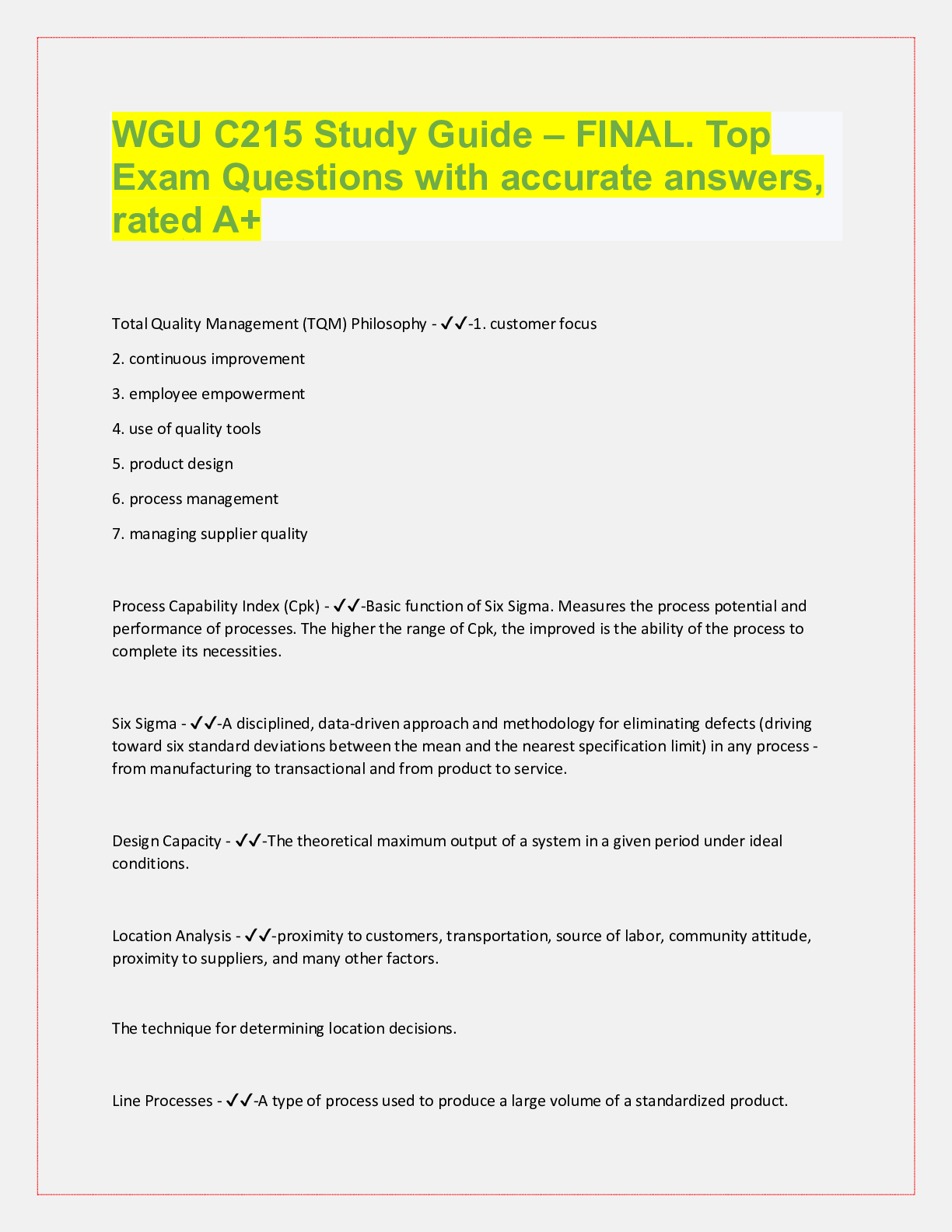
Also available in bundle (1)
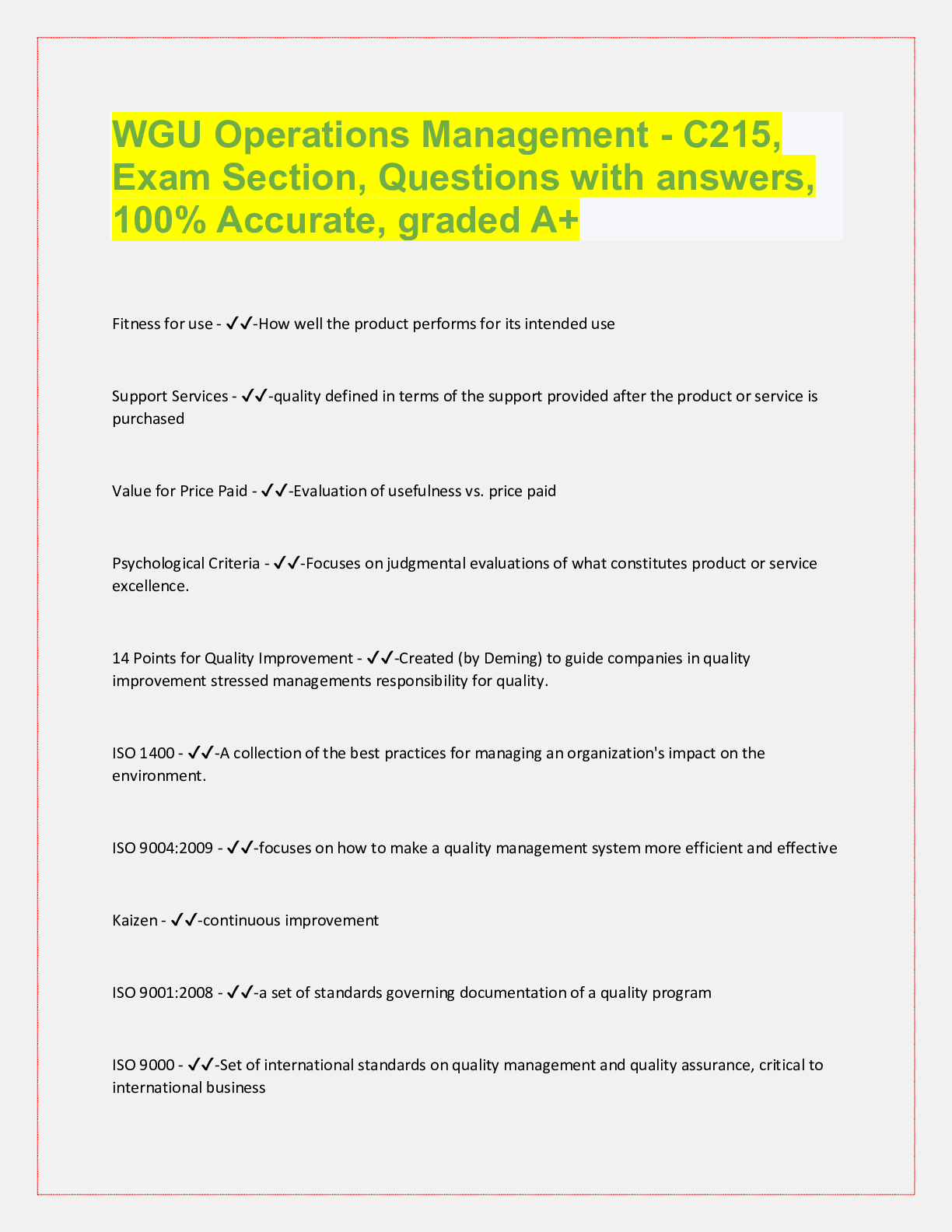
WGU C215 exam bundle, top Questions and answers, verifi
WGU C215 Operations Management, Top Exam Questions with accurate answers, 100% Accurate, rated A+. latest exam versions.
By Topmark 1 year ago
$28
12
Reviews( 0 )
Document information
Connected school, study & course
About the document
Uploaded On
Mar 13, 2023
Number of pages
24
Written in
Additional information
This document has been written for:
Uploaded
Mar 13, 2023
Downloads
0
Views
39






